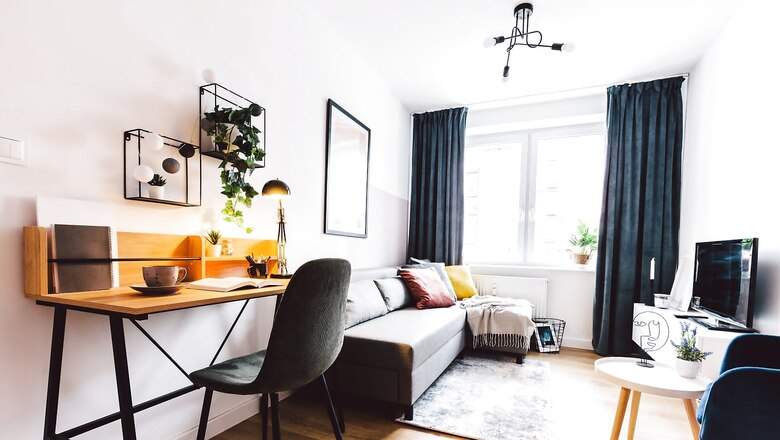
views
In times, when compact housing is being explored as the future of spatial design, optimisation of space is of utmost importance. Cracking the enigma of interior design, it is the minutest details that matter the most. Here are a few tips by Disha Bhavsar and Shivani Ajmera, Principal Designers and Co-Founders, Quirk Studio to fabricate spaces with petite dimensions to make them look and feel larger than they are.
Windows and natural light
Big openings add volume to the space along with airiness. The trick is to opt for sliding fenestrations instead of those with a swing to optimise space utilisation. Additionally, harmonise the wall colour with similar coloured high-hanging drapes over the windows or leave them uncovered to add depth. Using plain colours or small patterned fabrics is ideal to open the compact space further.
Space planning
Reduce the boxy impact by strategizing the layout of the room. Create frames by experimenting with varied setups where the furniture is placed at a distance from the walls. This will add the illusion of space by shifting the focal point away from the walls. One of the best ways to maximise the small space is by opting for multifunctional spaces. For instance, the sofa in the living room can be converted into a bed during the night. The kitchen counter or the dining unit can be used as a makeshift work desk.
Colour palette
Use light, natural shades like cream, beige and white to add more lightness and volume. They create an illusion of space and ensure that the space does not feel congested. These muted colours can be paired with an array of decor elements and will be in style for a long time.
Be vigilant with furniture pieces
Furniture adds mass to the space and the necessary drama. However, the key is to prefer limited pieces of small furniture or pieces that are raised on sleek legs, to open the floor for vision. Additionally, pieces such as full-length bookshelves and wall-to-wall shelves add depth and volume to the room.
Optimal lighting
Lighting, when used in variety, has a stimulating outcome by creating multiple focal points while illuminating the space for movement of vision. One could also break the uniformity of small spaces by using round lamps and hanging thin lights.
Elements of design
Create a sense of illusion by using transparent or translucent pieces to avoid blocking the vision, for instance, using translucent glass for diving space. Another way to add volume by illusion is by adding reflective elements such as mirrors to the walls. They add drama and a few inches to the frame of vision. A significant contributor to decor is the artwork. Adding to the impact, 1-2 oversized pieces like photographs or paintings manifest a colossal effect.
Read all the Latest Lifestyle News and Breaking News here




















Comments
0 comment